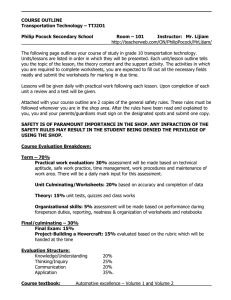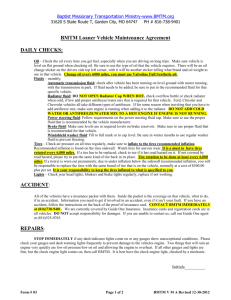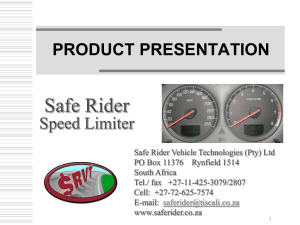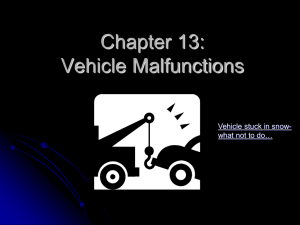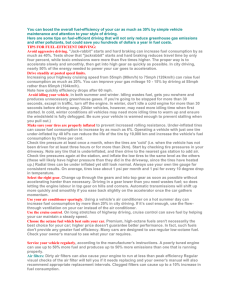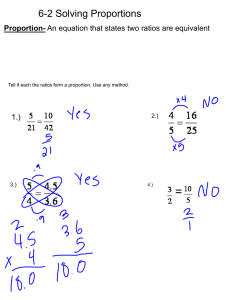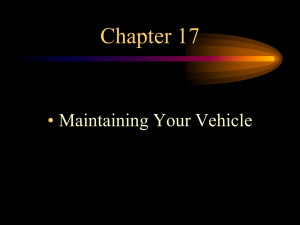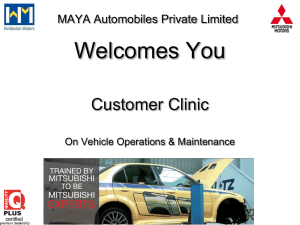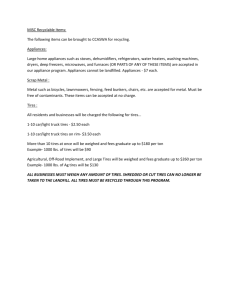ch. 17 notes
advertisement
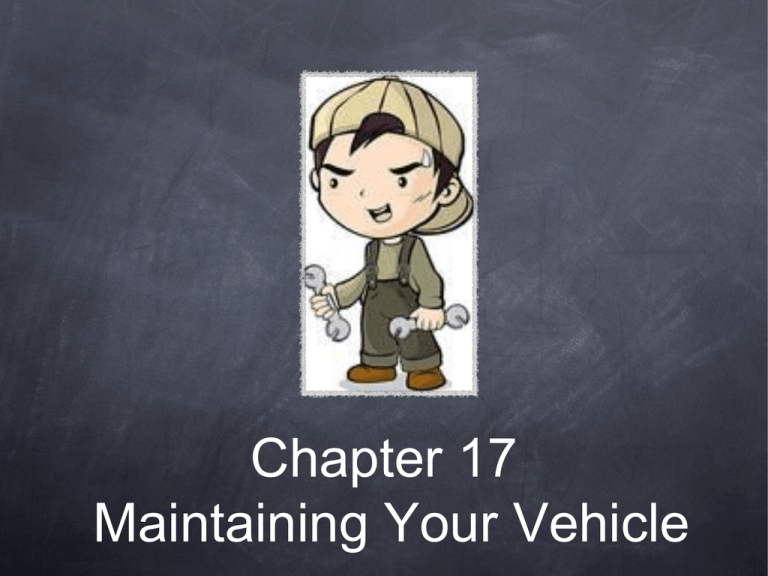
Chapter 17 Maintaining Your Vehicle Owner's Manual Provides valuable information about your vehicle and it's systems Fuel System Fuel Injection System Deliver exact amount of fuel to engine Reduce the amount of pollution-causing gases Fuel Efficiency Depends upon: Weight of car Speed you drive - over 55 fuel efficiency decreased Air resistance: keep windows closed when driving over 45 mph Fuel Efficiency Continued Also depends upon: Type of engine - 4 or 6 cylinder Vehicle Design Manual vs Automatic Power equipment - air conditioning Know how to calculate your MPG Used 10 gallons of fuel to drive 150 miles : 150 divided by 10 = 15MPG You have 10 gallons of fuel. Your car delivers approximately 15 MPG in the city. How many miles should you be able to drive? = 150 miles Emission System Catalytic Converter Converts harmful gases into less harmful gases & water Muffler - reduces noise. Louder sounds may indicate a hole in. Our muffler Check emission system - CO ( may poison you), CO2, hydrocarbons, nitrogen oxides Drive Train System Engine Often covered in warranty Transmission (low fluid level may produce jerky shifting) Clutch Drive shaft Differential (allows 1 wheel to turn more slowly than another) Transaxle Drive axles Ignition & Electrical System Alternator- recharges the battery Battery - strong acid (dangerous)- powers vehicle's starter, lights, computer assisted controls, electrical accessories. A dead battery (no sound when starting the engine)can be jump started with jumper cables - know the procedure for "jumping" a vehicle's battery Lights - headlights, taillights, back up lights, turn signals. Should be replaced immediately when defective Lubricating & Cooling Systems Oil helps engine work efficiently by reducing friction and cleaning engine parts - warning light comes on - pull off road and shut engine Cooling System Cools engine - mixture of antifreeze & water Provides heat to interior of car Radiator - connected to the engine - holds the coolant Thermostat - controls the amount of coolant needed Maintaining Control Systems Power Steering - makes steering easier Master Cylinder (Brake System) - forces fluid to each wheel's brake cylinder and squeezes brake pads against the turning disk which causes the friction to slow the wheel Parking Brake is a completely separate system it should hold your vehicle on a hill Suspension System Keeps tires in line according to steering Shock absorbing Preventative Maintenance (Care given to prevent trouble later) Includes: Day-to-day care Mileage-based-maintenance: Periodic servicing done after a certain number of miles - shown in manual Warranty may be voided if maintenance schedules are not followed Tires Belted tires - improved strength, performance and mileage Radial tires - gives best fuel mileage strengthens tire, improved tread mileage, & traction Air pressure in increases when warm, lowers when cool Tires need to be rotated regularly, balanced (for even wear) and aligned (for longer life & more even wear of tire) Replace tires when the wear bar appears smooth Always use the same tires for all 4 tires If you want your tires to last longer then you need a higher tread-wear rating

